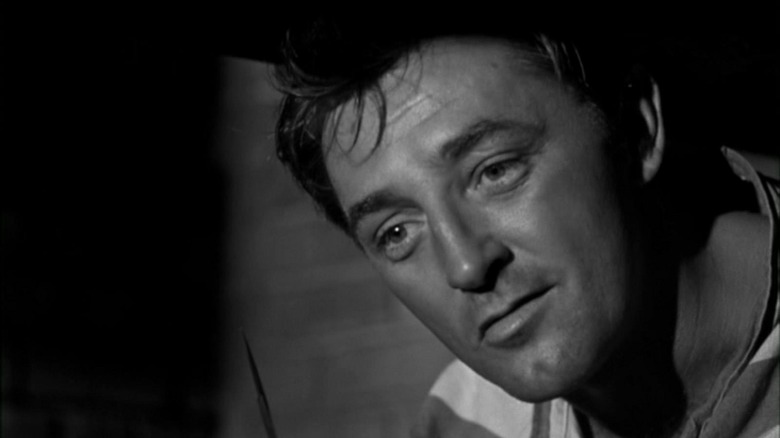
Nobody knew what to make of "Night of the Hunter" when it screened in 1955. Directed by actor Charles Laughton from a script by James Agee, it broke every rule in the book. It's a fairy tale that's nastier and more adult than anything Disney could produce. It's a black-and-white film made at a time when color movies were coming into vogue. Famous actor Robert Mitchum plays one of the scariest villains in film history. There's a stretch in the middle that swings into magical realism, and the end is a Christmas movie. "Night of the Hunter" was so hated by critics at its release that Laughton decided never to make another film. These days it's heralded as not just one of the greatest pictures of its era, but one so miraculous in its construction (despite its foibles) that it might as well be a UFO.
Many have lauded Charles Laughton as the film's guiding genius, and there's a grain of truth to that. Laughton was a first-time director who approached the script he was given with a discerning eye. Together with cinematographer Stanley Cortez and the rest of the crew, they found a way to translate and often transcend the appeal of the source material on screen. As the only film Laughton ever directed, "Night of the Hunter" is catnip for auteur theorists. But all films come from somewhere. Before "Night of the Hunter" was a movie, it was a popular novel by Davis Grubb; that novel was adapted by James Agee, a famous critic of his time in the last year of his life.
Permit Me Voyage
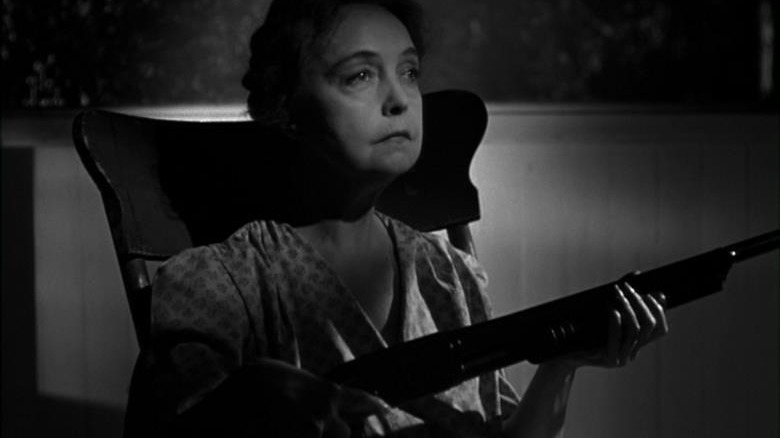
James Agee rarely receives the same acclaim Laughton does in the discussion of "Night of the Hunter," perhaps because his contributions to the film are so controversial. Agee was a heavy drinker at the time that the project fell into his lap. He took an almost 300-page novel and turned it into an almost 300-page script. For context, scripts typically run 90-120 pages. As Francine Prose in the Library of America's column "The Moviegoer" said, "Agee did go on at great length about this or that minor character, adding monologues and elaborations that never made it to the screen." These details might be fascinating for today's readers but were effectively useless for Charles Laughton and his crew at the time. Laughton had to cut down the script so that his team could film it.
Being two artists with strong personalities, Laughton and Agee had many differences of opinion during the revision process. Laughton's widow Elsa Lanchester would say that "Charles finally had very little respect for Agee. And he hated the script, but he was inspired by his hatred." The final script was credited solely to James Agee, per a write-up in the AFI Catalog. Yet there were those at the time who insisted the majority of the text was Laughton's, even if he refused to take credit for it. The producer Paul Gregory would say that "The script that was produced on the screen is no more James Agee's ... than I'm Marlene Dietrich."
Death In The Family
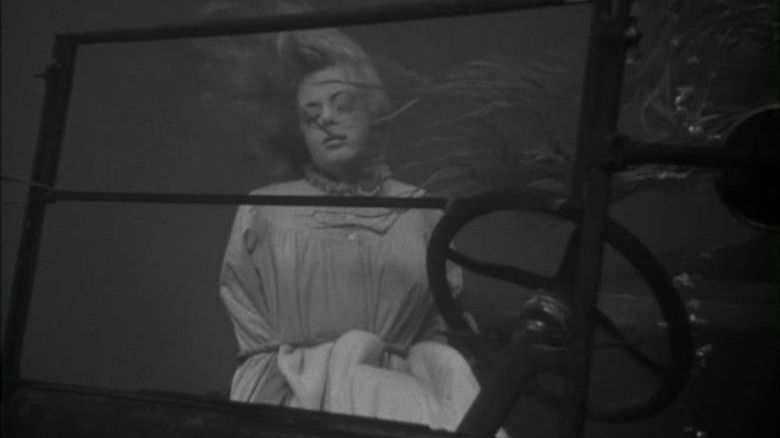
James Agee died before the film was released, so it was Charles Laughton who instead suffered at the hands of the critics. Paradoxically, it was also Laughton who was acclaimed when the film began its meteoric ascent through the ranks of Hollywood canon. All things considered, it's tempting to assume from these stories that Agee had little to do with the film's success. For his part, cinematographer Stanley Cortez credits folks like Milton Carter, Bob Golden, and Hilly Brown as the unsung heroes of the film. It was their support, he said to American Cinematographer, that gave Laughton the tools he needed to make his movie.
The hidden link between James Agee and Robert Laughton may have been Davis Grubb, the author of the "Night of the Hunter" novel. Preston Neal Jones diagrams Grubb's influences in his making of "Heaven and Hell to Play With". Davis's brother, Louis, insists that the "LOVE" and "HATE" tattoos on the knuckles of malevolent preacher Harry Powell were inspired by a terrifying real-life encounter in a pool hall. Another influence was the Clarksburg Salesman criminal case in 1931, when a man who called himself Harry Powers romanced and then killed women for their money; Grubb would first tell this story in "Gentleman Friend" before tackling "Night of the Hunter." These tales, of course, all came from Grubb's beloved home of West Virginia. Grubb would say that "I can't quite visualize things happening in the world without their happening here."
Let Us Now Praise Famous Men
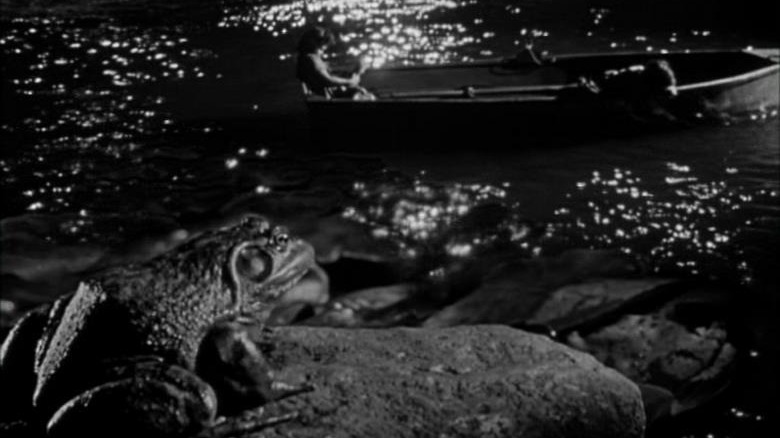
Davis Grubb and Charles Laughton discovered over the course of production that they were on very similar wavelengths. According to an article on TCM, Laughton was thinking of "Night of the Hunter" as a fairy tale from the very beginning. "It's really a nightmarish sort of Mother Goose tale we were telling," he said. David Thompson claimed in his 6th Edition of his "New Biographical Dictionary of Film" that "the Hans Andersen-like clarity of the conception" and "the extraordinary mythic precision" of "Night of the Hunter" were Laughton's contributions. Meanwhile, "Heaven and Hell to Play With" notes Davis Grubb's interest in the children's song "London Bridge is Falling Down" while writing the novel. Grubb read in "The Oxford Dictionary of Nursery Rhymes" that the song originated from the "custom immemorial" of burying children alive at the riverside to appease the river's gods before building a bridge.
Like Grubb, James Agee was born in the South, although in Tennessee instead of West Virginia. He profiled white Alabama sharecroppers in "Let Us Now Praise Famous Men" and won the Pulitzer Prize for his posthumous novel "A Death in the Family," set in Tennessee. Like Laughton, Agee "sought to revive the fearless inventiveness of D.W. Griffith," says Michael Sragow for Criterion. Griffith is reviled today for directing "Birth of a Nation," a revisionist history of the Civil War that positioned the Klu Klux Klan as the last line of defense between freed Black slaves and the white women of the United States. Writers and activists at the time of the film's 1915 release were disgusted by its racism. Both Agee and Laughton were inspired by Griffith's vision of a larger-than-life, mythic South, whether or not it ever existed outside of books and movies.
Night Of The Hunter
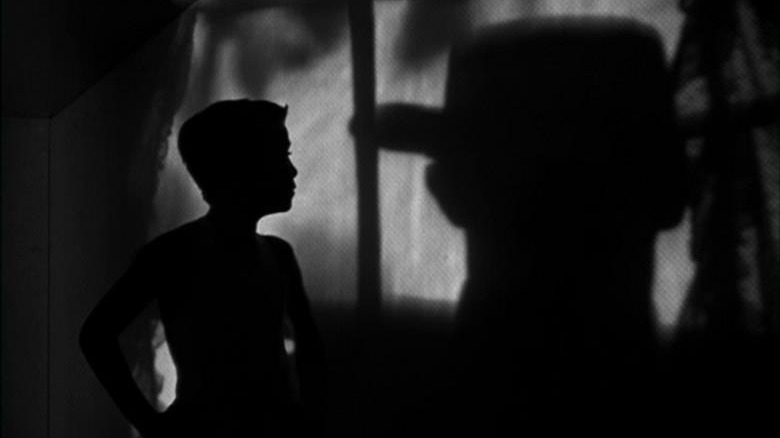
The original draft of James Agee's "Night of the Hunter" script was discovered in 2003. Despite its reputation through the years, the script remains largely faithful to the novel. In fact, according to Michael Sragow, a number of Agee's inventions (like an early scene where Powell's knife cuts through his pants) made it into the final script, although in adapted form. Whether or not Charles Laughton liked working alongside Agee, he preserved Agee's structure and emphasis even as he hacked away at the verbiage. David Thompson suggests that "Agee's vision and his Tennessee roots meant a lot to Laughton as he rewrote the script and made the picture." Another director might have chosen to leave the project after having been given nearly 300 pages of a script filled with unnecessary asides. Laughton instead saw it as a challenge.
"Night of the Hunter" is remembered today as a triumph of visuals rather than pure narrative construction. The lighting, acting, and blocking of each scene are as important as the dialogue, if not more so. But each member of the crew influenced the film in ways outside of their credited roles. Over the course of the production, Davis Grubb sent countless sketches to Laughton to convey what he wanted from the film. Several of these, including one of "the preacher's shadow appearing on the children's bedroom wall" per Francine Prose, inspired some of the best-loved scenes in "Night of the Hunter." Laughton himself transformed Agee's novel-length adaptation into a workable shooting script, proving himself a talented editor and writer as well as a director of actors. Agee's own contributions in the process of restructuring Grubb's novel inevitably shaped the film as a whole. Whether or not everybody on the team agreed, they ended up on the same page.
Read this next: The 20 Best '60s Horror Movies Ranked
The post A Lot Of Work Went Into Whittling Down The Night Of The Hunter's 'Mammoth' Script appeared first on /Film.
0 Commentaires